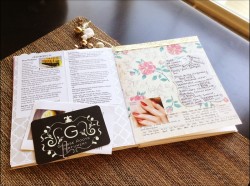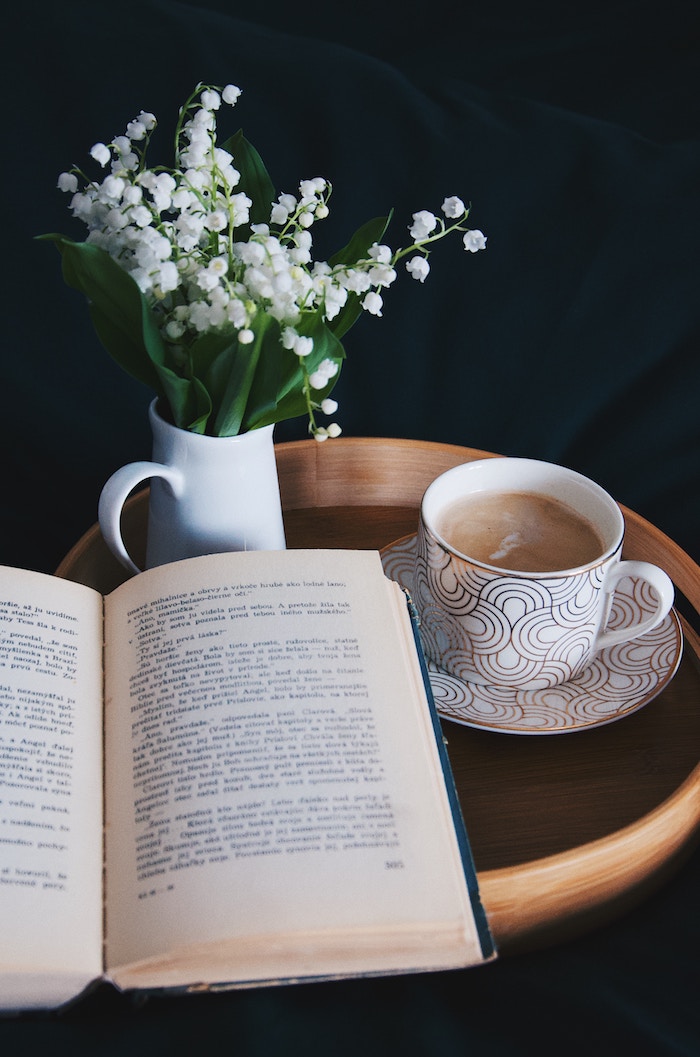We often hear the phrase “waiting for inspiration to strike.” But what if it’s not “striking,” despite every ounce of openness and creative intention inside us? You might have started 2014 with every intention of finishing your novel, making new recipes every week, and taking amazing photos during a trip to Argentina. Alas, for most of us, life isn’t filled so much with journeying to breathtaking locales as staying home, going to work, and doing our quotidian chores. During these times, we must court inspiration. We’ve got to find ways to stay inspired in our cluttered apartments, everyday office spaces, and oh-so-mundane hometowns.
Or perhaps inspiration comes to you daily without much effort on your part. Even so, chances are you’re juggling a busy work schedule, which limits your time to spend on both personal and work-related creative pursuits. I’m often inspired at the “wrong time.” For example, I’ll be working on a filing project for my supervisor when I’m struck with the most amazing idea for reorganizing my sweaters (!!!)…but I’m unable to act on that thrilling idea at that moment.
The following are 5 ways to seek inspiration and cultivate a more dynamic relationship with your creative projects.
1. Take Notes.
I talk about journals a lot—they’re simply one of my favorite things in life. Whether you write lengthy entries or jot down a few bullet points, there’s no wrong way to keep an inspiration journal. You may even fill your journal with a combination of text and images—anything goes! I have a notebook full of articles I admire for their writing style alone! Take time to find the quotes, images, etc. that make your heart beat a little faster. Return to this collection when you’re experiencing a creative rut.
While I love traditional, elegant notebooks, they’re not always the most practical, especially if you’re on the go. Productivity apps like Evernote (free) provide user-friendly platforms for creating and organizing notes on your phone, tablet, and computer. Look for an app that will automatically sync with your other devices.
I’m also a fan of the even simpler post-it note. Say you have a great idea but you can’t get to your supplies/computer/desk at that moment—write your idea on a scrap of paper, or, if you find yourself in this situation often, carry a small notebook with you for just this purpose. This is my go-to strategy while I’m at work. In the back of my mind, I’m always thinking about future blog posts and recipes. Writing these ideas down on a discreet piece of paper helps me remember them later, and I feel better about leaving them on the back burner to complete tasks at work.
2. Use Social Media (in Moderation).
Occasionally, it may help to check in with Twitter users and bloggers who share your creative interests. This is a great way to learn new techniques, find out about relevant publications, and even discover how others manage their work life and creative time.
Instagram and Pinterest are two awesome social media platforms that connect users through images. Pinterest allows you to organize photos (and their corresponding links) with various boards of your own creation. The especially great thing about Twitter, Pinterest, and Instagram is that you can choose your level of involvement.
As with almost every Internet site, of course, moderation is key when using social media. If I’m not careful, I can spend hours exploring boards on Pinterest, but I try to limit myself to half an hour or so. One, this makes sure I don’t cut into too much time when I could be creating myself, and two, it helps maintain a balance between learning from others and venturing out in my own original way.
3. Spend Time Alone.
You probably have a good sense of what kind of social environment fuels your creativity. Most introverts value time alone while extroverts tend to crave sharing ideas with others. While I believe in embracing our various creative comfort zones, if you’re a collaborative type, I encourage you to set aside a little time for yourself. As Susan Cain explains in Quiet: The Power of Introverts in a World that Can’t Stop Talking, too much collaboration may lead to peer pressure and “groupthink,” the loss of independent thinking in favor of group harmony. Plus, time alone does a person good; Cain writes, “research strongly suggests that people are more creative when they enjoy privacy and freedom from interruption.”
That being said, we can all benefit from a little collaboration. When writing my undergraduate thesis, I spent most of my creative time alone, but about once a week I met with my advisors for a few hours to discuss the project. This collaborative time was invaluable and helped me produce something I felt proud of. I was fortunate enough to work with individuals who valued my thoughts and encouraged me to take the project in my own direction. If you’re able, seek out collaborators and mentors who will do the same for you.
4. Take a Shower.
That is, take a break—especially if you’ve been working on a creative project for a while, and you feel that your inspiration has dried up, and you’ve hit a wall.
After we’ve been keenly focused on a problem, our brains need to relax. As cognitive neuroscientists Mark Jung-Beeman and John Kounios explain, “aha” moments usually occur during time when our minds are disengaged from the task at hand; “that’s why so many insights happen during warm showers.”
This is not the same as passively waiting for inspiration to strike, however. In order to have your moment of brilliance in the shower, your brain has to have something to chew on in the first place, which is why it’s so important to actively and frequently seek knowledge and inspiring ideas.
5. Take a walk…or lie down.
Your brain sends signals to your body, but your body sends signals to your brain, too! If you’re stuck on something (say, the plot twist in your novel) and need more creative solutions, try taking a walk, either pacing around your apartment or in your neighborhood. Just make sure you’re wandering freely–a 2012 study found that people who paced freely came up with more ideas than when they walked in a square, or when they didn’t walk at all.
Surprisingly, lying down can unleash your creativity as well. A 2005 study by Australian researchers found that people solve anagrams faster when they’re lying supine than when they’re standing. We lie down to relax, sleep, and dream, and so it is the posture most associated with our subconscious. (This is why therapists have their patients lie down).
I hope these tips help you court your muse!
More articles on Inspiration and Creativity:
The Best Writing Tip I Ever Got
6 Ways to Boost Your Career in 10 Minutes or Less
How to Create a Mindful Morning Routine
__
Photos: Mary Hood






